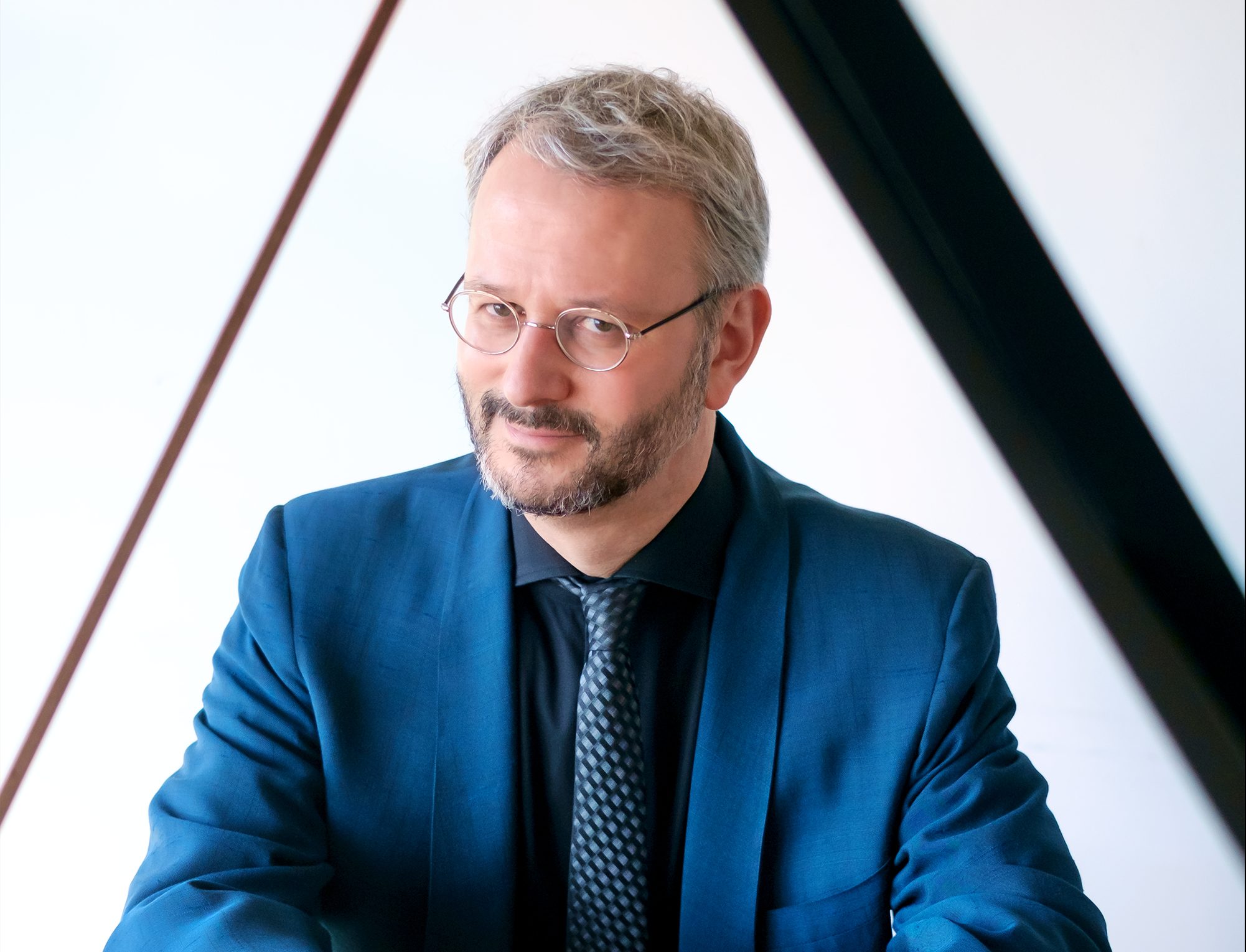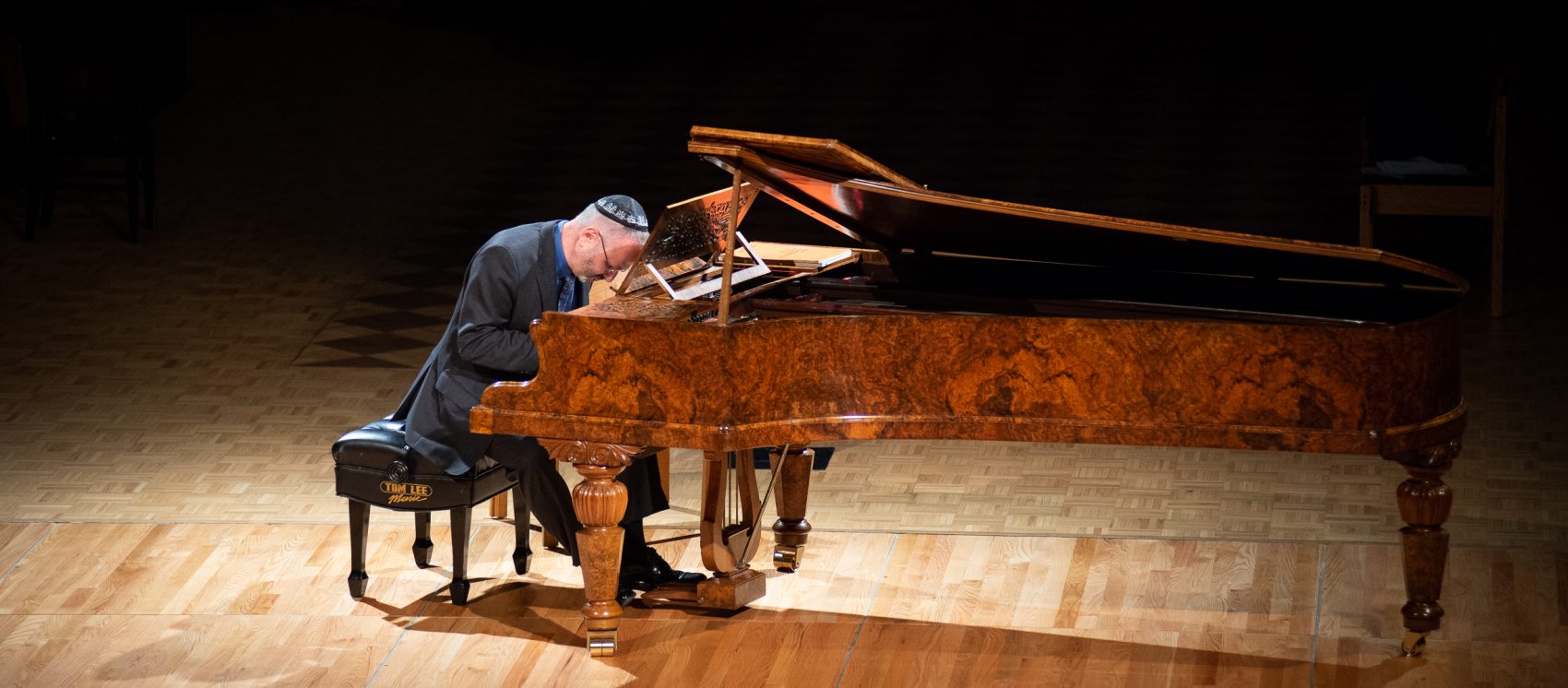Christ Church Cathedral | Map
Byron Schenkman, 19th-century broadwood piano, from the instrument collection of Early Music Vancouver
Frederic Chopin was a central figure of 19th century Romanticism, but his connections to J.S. Bach are clear in his own preludes, which were directly inspired by Bach’s The Well-Tempered Clavier. This program also places Chopin’s music in the context of Romantic composers who influenced his work, including the great Polish pianist Maria Szymanowska and the composer/critic Robert Schumann. EMV favourite Byron Schenkman will play this concert on EMV’s 19th century Broadwood.
“An elegant stylist with a cleanly articulated sound.” – Allan Kozinn, The New York Times
To view/download the programme, please click here.
Please note that the pre-concert talk at 11:15am will be between Vancouver Chopin Society Director Patrick May and Byron Schenkman.
A collaboration with the Vancouver Chopin Society
This concert is generously supported by Agnes Hohn
Programme
Fryderyk Chopin (1810-1849):
Waltz in E minor (Op. post.)
Prelude in C# Minor, Op. 45
Nocturne in Ab Major, Op. 32, No. 2
Maria Szymanowska (1789-1831):
Nocturne in Bb Major
Robert Schumann (1810-1856):
Kinderszenen, Op. 15
Of foreign lands and people
Curious story
Blind man’s buff
Pleading child
Perfect happiness
Important event
Dreams
By the fireside
Knight of the rocking horse
Almost too serious
Frightening
Child falling asleep
The poet speaks
Clara Schumann (1819-1896):
Nocturne in F, Op. 6, No. 2
Fryderyk Chopin:
Prelude in Db Major, Op. 28, No. 15
Robert Schumann:
Arabesque, Op. 18
Johannes Brahms (1833-1897):
Rhapsody in Eb, Op. 119, No. 4
Programme Notes
One of the most famous quotes in the history of music criticism comes from Robert Schumann, writing about Frederic Chopin in 1831: “Hats off, gentlemen, a genius!” At that time, the idea of a composer being a genius was still quite new. Whereas earlier composers had been servants of the courts, churches, and/or theaters where they worked, 19th-century composers had new freedoms and new responsibilities. On one hand, they could express their innermost thoughts and feelings in whatever ways suited them; on the other hand they were expected to create works of genius worthy of posterity. As a result, 19th-century composers created works on a much a larger scale – from Beethoven’s Ninth Symphony to Wagner’s Ring Cycle, but also on a much smaller scale – intimate musical poetry such as the piano pieces which make up today’s program.
Frederic Chopin’s output consists primarily of works for solo piano, mostly in miniature forms. Some are based on dances, such as the waltz which begins our program; some are preludes inspired by the music of J. S. Bach; and many are vocally-conceived character pieces which Chopin often calls “Nocturnes.” As with Felix Mendelssohn’s “Songs without words” or Fanny Mendelssohn’s “Songs” for solo piano, these pieces are based on the premise that music can communicate that which cannot be expressed through mere words.
One of the early influences on Chopin’s work was that of his Polish compatriot Maria Szymanowska (née Wołowska). By the time Chopin was starting his career, Szymanowska was one of the most celebrated pianists in Europe. She was among the first to tour internationally, performing solo recitals from memory. In 1828 she accepted a position as court pianist to the Empress of Russia and she spent the rest of her career in Moscow and St. Petersburg. Her compositional output includes waltzes, preludes, nocturnes, and many of the other forms we associate with the work of Frederic Chopin.
Robert Schumann was known first as a music critic and later as a composer. He struggled with mental illness throughout his life and one of his obsessions seems to have been a longing for innocence. Although he wrote many beautiful pieces for children to play, his Scenes from Childhood, op. 15, is a series of nostalgic reminiscences intended for adults. It is interesting to note that Schumann claimed to have added the evocative titles to these pieces after the fact “as mere hints for interpretation,” once again suggesting that music can express what words cannot.
Robert Schumann’s fame as a composer is largely due to his music having been championed by his wife Clara (née Wieck) who was the more famous musician of the two in their time. Clara Wieck began her career as a child prodigy and ended up supporting her husband and their large family through her international concert tours, teaching, and also arranging Robert’s music for publication. She herself published 23 volumes of music including solo piano works, songs, chamber music, and a concerto. Her first ten volumes of music were published while she was still in her teens. Unfortunately, in a society in which composers were expected to be superheroes and superheroes were not supposed to be women, Clara struggled with self-doubt. She wrote in her diary that she should not delude herself into believing she could be a composer, that no woman ever had, and that it would be arrogant to think that she could be the first. If only she had known about the many women who composed, published, and in some cases were greatly celebrated for their music in prior centuries!
When Johannes Brahms was just about twenty years old, Robert Schumann declared him a genius “who would achieve mastery, not step by step, but like Minerva fully armed from the head of Jove… a young fellow at whose cradle graces and heroes stood watch.” Brahms was being presented not just as a genius but as a sort of deity or at least prophet. The pressure was on and it’s no wonder it took Brahms 21 years to complete his first symphony. In the first few decades of his career Brahms focused on large-scale works, including sonatas which Schumann described as “disguised symphonies.” Later in life Brahms turned to smaller forms, at times showing the influence of François Couperin whose compete keyboard works he helped to edit. His final work for solo piano, the Rhapsody in E-flat, combines the orchestral grandeur of his early sonatas with the intimacy of his late keyboard miniatures.
— Notes by Byron Schenkman

Byron Schenkman, 19th-century broadwood piano, from the instrument collection of Early Music Vancouver
Byron Schenkman has recorded more than thirty CDs of 17th– and 18th-century repertoire, including recordings on historical instruments from the National Music Museum, Vermillion, and the Museum of Fine Arts, Boston. A recipient of the Erwin Bodky Award from the Cambridge Society for Early Music “for outstanding achievement in the field of early music,” he was voted “Best Classical Instrumentalist” by the readers of Seattle Weekly, and his piano playing has been described in The New York Times as “sparkling,” “elegant,” and “insightful.”
He has been a featured guest with the Chameleon Arts Ensemble of Boston, the Daedalus Quartet, Les Enfants d’Orphée, the Northwest Sinfonietta, Pacific Baroque Orchestra, Philharmonia Northwest, and the Portland Baroque Orchestra. He was also founding co-director of the Seattle Baroque Orchestra with violinist Ingrid Matthews. In 2013, he launched Byron Schenkman & Friends, a Baroque and Classical chamber music series at Benaroya Hall in Seattle. Schenkman is a graduate of the New England Conservatory and received his master’s degree with honors in performance from the Indiana University School of Music. He currently teaches at Seattle University and has been a guest lecturer in harpsichord and fortepiano at Indiana University.


